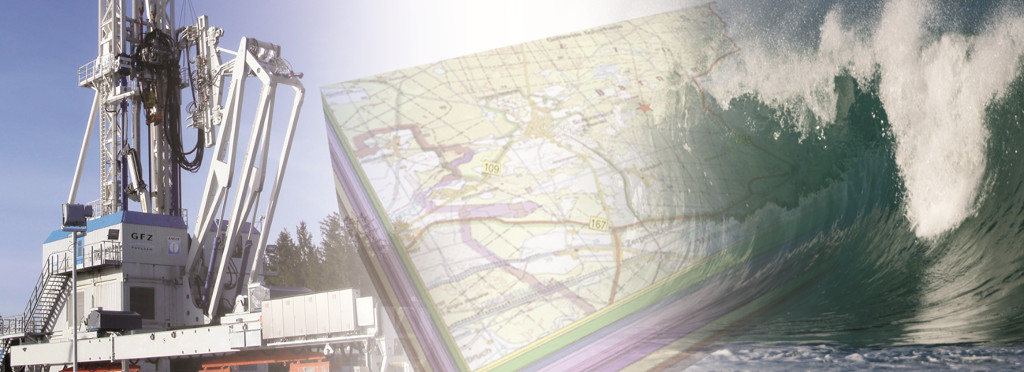TRIDEC

Crisis management requires real-time data fusion of remote sensors (satellite feeds), in-situ sensors (e.g. tide gauge sensors, oil rig drill bit sensors) and social media streams (e.g. Twitter eyewitness reports of flooding) to feed into a decision support system for presentation of data efficiently to civil protection agency command and control user interfaces.
Tsunami are triggered by earthquakes or landslips and there is no way to predict them in advance. During a Tsunami event, real-time wave observations are fed into simulations to predict when and where a Tsunami will impact the coastline. Civil protection agencies use this information to pro-actively alert people on beaches, via channels such as mobile phones, to tell them to seek safety on higher ground. Off-sea drilling is even more challenging, with the time from a drill bit kick event to blowout event measured in seconds. Supporting automated decision making is key here as humans might not be fast enough to make the appropriate responses that ensure the safety of the rig.
Big Data Decision SupportProject Objectives

TRIDEC focused on new technologies for real-time intelligent information management in collaborative, complex critical decision processes in earth management. A knowledge-based service framework has been developed for context information and intelligent information management with flexible orchestration of system resources. An adaptive framework for collaborative decision making has been enabled with new functions for the support of complex business processes. TRIDEC has been demonstrated within two scenarios; both of which involve intelligent management of large volumes of data for critical decision-support.
Use Cases
Tsunami early warning: This scenario concerns a large group of experts working collaboratively in crisis centres and government agencies using sensor networks. Their goal is to make critical decisions and save lives, infrastructural and industrial facilities in evolving tsunami crises.
Oil drilling: This scenario concerns a large group of consulting engineers and financial analysts from energy companies working collaboratively in sub-surface drilling operations. Their common objective is to monitor drilling operations in real-time using sensor networks, optimising drilling processes and critically detecting unusual trends of drilling systems functions. This prevents operational delays, financial losses, and environmental accidents and assures staff safety in drilling rigs.
IT Innovation's Role
Semantics and data fusion - Semantic interoperability focussing on the World-Wide Web (W3C) and Open Geospatial Consortium (OGC) standards stack. Backend data fusion algorithms for spatio-temporal sensor data and geoparsed Twitter streams.
Sensors and social media - Data fusion of real-time sensor and media data feeds including Tide Gauge & GPS sensors, SeisComp3 earthquake alerts, Tsunami simulations, Twitter streams.
Decision support systems - Backend analytics for decision support integrated into a commercial Command and Control User Interface.
Result highlights
Video demonstrators
Twitter Crisis Mapping, YouTube demonstration
5th International Tsunami Symposium 2012, YouTube demonstration
Academic papers
Real-time Crisis Mapping of Natural Disasters using Social Media, IEEE Intelligent Systems, 2014
Multi-disciplinary Approaches to Intelligently Sharing Large-volumes of Real-time Sensor Data During Natural Disasters, Data Science Journal, 2013
Modeling and Detection of Hydrodynamic Trends for Advancing Early-Tsunami Warnings, ISOPE, 2013
Automated operational states detection for drilling systems control in critical conditions, ESANN 2013
Project Fact Sheet
The TRIDEC project was a 38 month project funded by the EC FP7 framework programme.
Coordinator: Helmholtz-Zentrum Potsdam Deutsches GeoForschungsZentrum, Germany
Website: http://www.tridec-online.eu
 TRIDEC has received EC research funding.
TRIDEC has received EC research funding.